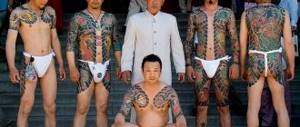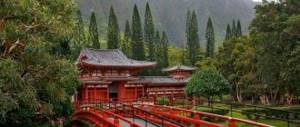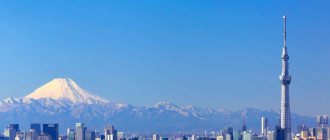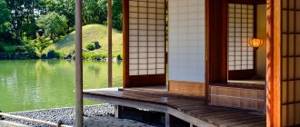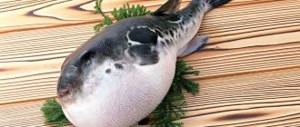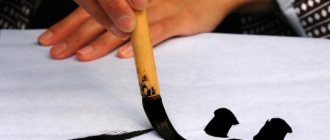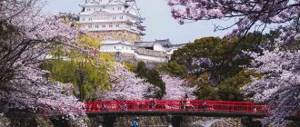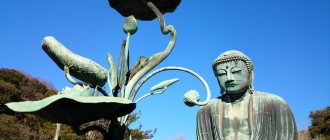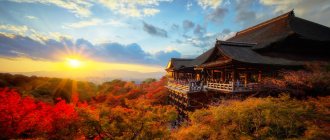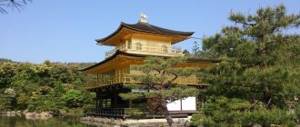From 1192 to 1333 Kamakura was the capital of Japan. Shogun Yoritomo from the ruling Minamoto clan moved his military-feudal government here to protect it from the pampered court life in Kyoto, and set up his “field headquarters” here. During the Edo era, the city lost its importance. There are now 176 Shinto and Buddhist temples in Kamakura. But most of all, pilgrims and curious people from all over the world are attracted by the bronze statue of Daibutsu - the Great Buddha. The statue is the second largest in Japan (the first is in Nara). Its height is 11.4 m, weight is 93 tons.
Tours to JapanTours to Japan In Japan you can see everything at once - ancient temples, palaces, cherry blossom festivals, samurai, tea ceremonies, sushi, mysterious geishas, sumo wrestling - this is only part of the preserved history and culture of ancient Japan. |
p>
It was from Kamakura that the powerful shoguns ruled Japan, and it was the capital of the samurai. Everything here breathes in the meantime. Kamakura has not lost its former greatness, although its heyday has long passed. The culture of Kamakura was different from the aristocratic culture of Kyoto. It was already based on the principles of Zen and other movements of Buddhism. And here you can find many images of Buddha, which will not leave anyone indifferent due to their expressiveness, evoking a sense of presence.
Kamakura is very green. When you walk between tall pines, you feel like you are in a forest or in a huge park. And suddenly a huge head appears above the pines. Here it is - the Big Buddha of Kamakura! The size of the Buddha is amazing: his height (about 13 m), two-meter face, one-meter eyes, long two-meter ears. It weighs approximately 121 tons. It is also surprising that the upper part of the Buddha’s body is larger than the lower, but this was done deliberately, according to the laws of perspective. His head is slightly tilted forward, so when you approach, you feel an internal connection, as if you were expected and are now being welcomed.
The history of the creation of the Big Buddha is dramatic. Lady Inadano Tsubone, who served under Shogun Yoritomo, dreamed of building a huge statue of Buddha. When her master died, she left her service at court to devote herself entirely to raising funds for the future statue. Her continuous efforts could not leave anyone indifferent. And she was joined by Joko, the abbot of Totomi Province, who traveled throughout Japan to raise funds. “And, thanks to the compassion of the Buddha, enough funds were collected to begin construction in 1238.”
The first Buddha, which was built over five years of continuous work, was made of wood. But, unfortunately, the statue was destroyed by a hurricane in 1248. Then Dzeko and Inadano Tsubone suggested casting the statue in bronze, making it more durable. And a new Buddha was created in 1252.
Today the Big Buddha sits in the open air, but this was not always the case. Immediately after the wooden Buddha was completed, a temple was built around it. But the hurricane that destroyed the first Buddha also destroyed the temple. The new temple was completed the same year as the new bronze Buddha, but was again destroyed by a hurricane in 1335. It was rebuilt again, but was again destroyed by a terrible storm in 1368. The fourth temple to be rebuilt lasted until 1495, when a huge wave took it with her, leaving the Buddha in place. They tried to build the temple again, but they never finished it. And since then Buddha has been sitting in the open air. But these were not all the troubles that befell Kamakura. In September 1923, an earthquake destroyed the base of the statue, although the statue itself was not damaged. Only the name of the master who cast the Buddha has reached us - Ono Goroemon. Unfortunately, nothing more is known about him.
Today, like seven centuries ago, many people come here to touch something over which neither time nor the elements have power, to see Buddha on earth.
“Kamakura Buddha... in whose face rests everything great and magnanimous (beautiful, majestic), a living image of Nirvana.” Percival Lowell
Source
Story
Daibutsu from Kamakura is the second largest Buddha statue in Japan, second only to its older brother from Todai-ji Temple. According to legend, a visit to this sanctuary in Nara in 1195 impressed Minamoto so much that upon his return he wanted to build something similar in his own domain. However, four years later, the shogun died before he could realize his plans. Out of a desire to please the gods and respect for Yoritomo, the idea was supported by the ruler's widow, Masako, as well as the court lady Inada and a monk named Joko.
The sect to which Joko belonged revered Amida Buddha, who showed the righteous the path to the sacred Pure Lands, where it is easy to achieve nirvana. Originating in China, this movement gained popularity in the Land of the Rising Sun towards the end of the 12th century, and remains one of the most influential branches of Buddhism today.
The temple took five years to build, but in 1247 the original 24-meter wooden sculpture was destroyed by a typhoon. After this, Joko suggested casting the statue in bronze. It took several years to raise funds, after which the country's best sculptors - Hisatomo Tanji and Goroemon Ono - began work. It took the craftsmen 12 years to produce and assemble all the parts of the sculpture - we admire the result of their work today.
Initially, the statue was located under a roof, like the Big Buddha in Nara - however, the weather is more restless near the sea, and the roofs were twice torn off by powerful winds. The last building was destroyed in 1495 when a tsunami hit the city, and since then the statue has stood in the open air. At some point, it was even abandoned, and tramps took shelter from the weather inside the statue. It was only at the beginning of the 18th century that the monks raised funds for the reconstruction of Daibutsu, barely managing to save the statue from complete destruction.
The names of all the donors were engraved on the bronze petals behind the statue - initially there were 32 of them, but only 4 have survived to this day. The statue was once covered in gold, like many other images of Buddha, but time and weather have left almost nothing of its former splendor . Now the remains of gilding can only be seen on the ears of the sculpture.
Application
The Great Buddha in Kamakura is undergoing its first major restoration. Trucks with all the necessary equipment arrived at the temple in early January. A two-month restoration process has begun on the huge bronze statue. Restoration work will be completely completed by March 10.
Workers brought material
Work has now begun on a thorough examination and restoration of the statue. All this time, the Buddha will be surrounded by forests and covered with a transparent protective coating. This means that visitors will not be able to enter the 121-ton statue at this time.
The last time the statue, erected around the 13th century, underwent such a major renovation was in 1959. All work lasted two and a half years. According to the authorities, the National Research Institute was allocated 65 million yen to carry out the work mentioned.
Great Buddha in Kamakura
Due to the fact that the Buddha is recognized as a national treasure, the work requires special care. Specialists will use X-rays in their work, which will help assess the condition of the statue. They plan to use a special ultrasonic scalpel to remove rust. Minor dirt will be removed with plain water. The institute will also study the effects of vibration from cars and thousands of visitors on the statue, as well as from the wind blowing from the ocean, which is located less than a kilometer from the Buddha. The seismic shock absorber installed under the Buddha more than half a century ago will also be tested.
Workers prepare the site for restoration
“It is important that the work does not cause any damage to the statue,” said Masayuki Mori, a senior researcher at the institute. He also explained that the data obtained during the ongoing repair work will be saved and used for subsequent repairs in the future.
Thousands of tourists visit the monument in summer
Local tour operators fear that restoration work will damage the tourism industry. Thanks to the Buddha statue, the temple is one of the most famous and most popular tourist destinations. The half-kilometre line of shops along the Buddha Tourist Route from Hase Train Station will also see significant losses. One worker at a local sweet shop said: “Yes, the work will last just over two months, but we have serious concerns about our work.”
Preparing to start work
Despite this, the majority of the local population was sympathetic to the work that was necessary to maintain the statue and bring it into proper condition. Institute staff explained that such work must be carried out once every 50 years. Institute staff also noted that workers and owners of retail outlets located in the area of the temple were warned in advance about the planned restoration.
Based on materials from online publications.
What to see
The sculpture is impressive in its scale - its height with the pedestal is 13.4 m, and the weight of the large Buddha is more than 90 tons. Like the Statue of Liberty, Daibutsu is hollow on the inside, and visitors can view the interior of the structure.
The base of the sculpture was damaged by the 1923 earthquake. A few years later, the pedestal was repaired, but serious restoration of the monument was carried out only in 1960-1961. Then, during the work, the neck was strengthened and protection against seismic vibrations was installed.
The Buddha sits in the lotus position with his hands folded in the Dyani mudra gesture, symbolizing meditation. The serene expression on his face is in perfect harmony with the peaceful natural landscape that lies behind the temple. The densely forested mountains and endless sky create the perfect backdrop to contemplate the eternal calm on the face of the deity.
What is interesting about the big Buddha?
It is impossible to get to the giant Buddha on weekends and holidays, so it is better to visit it on a weekday. Having bought a ticket to the temple for 200 yen and walked through the crowd, you will see a 13-meter high deity peacefully sitting against the backdrop of evergreen mountains. It will greet you with silence and harmony, even if it is noisy around. In addition to his peace of mind, the Buddha surprises with his skillful sculpting and intelligent design.
» ALSO READ ARTICLE - Religion in Japan. Temples worth visiting
Walk around the statue and, when you are behind it, look up. On the shoulder blades of the big Buddha you will see these wings, which are actually two open windows. At the foot of the monument, tickets are sold for 20 yen, allowing you to enter inside and learn about their purpose. It is better to hear about the entire history of the temple and the statue on a fascinating excursion conducted by a local guide in familiar Russian. You can book a tour using this link.
Japan, day 8: Kamakura. Great Buddha
Today is our last departure from Tokyo - to Kamakura. Kamakura is a coastal town, now quite quiet, but in the eighth century it concentrated half the power in all of Japan. Kamakura is one of the most important centers of Buddhism and now has more than 70 temples and shrines. I've visited seven today. We were one stop short of Kamakura itself, getting off at Kite-Kamakura. Small platform, crowds of people, nothing is clear. We went to some map, found the first temple we needed on it, and off we went. This was Engaku-ji, founded by the shikken Tokimune Hojo. It was under him that the concept of kamikaze appeared - the sacred wind, when the enemy landing of the Mongols on the shore failed twice due to night typhoons. The temple is dedicated to all victims of the Mongol invasions, including the Mongols themselves.
| We go up to the temple |
The first thing we see is the unpainted wooden gate of San-mon, last rebuilt in 1783 and decorated with fine carvings and calligraphic tablets personally written by the 92nd Emperor Fushimi. True, I didn’t find the plaque, but the carving was there.
| Detail of the San-mon gate |
The main building of the temple, Butsuden, is one of the few where I didn’t notice the no photo sign, so here’s the Buddha from there.
All around are the remnants of the red leaf season.
And this is the Sariden reliquary, which contains the tooth of Buddha.
| Detail of the Chinese gate Karamon. |
If you go up the stairs from the San-mon gate, you can see Ogane - a large bell cast in 1301. From there you can see a piece of Kamakura - or rather, its outskirts.
I managed to see the first temple due to good weather, but then the rain started pouring down and poured non-stop... It’s good that there was almost no wind, although this didn’t help - my feet ended up getting wet through and through.
The second sanctuary - Tokei-ji - turned out to be quite small, and, in general, did not represent anything special, but it was interesting for its history. This is a convent founded in 1285, whose second name is the Temple of Divorces. If a woman wanted to leave her husband, she could live in a monastery for three years, and after that be considered officially divorced. This practice continued until 1873, and men were prohibited from entering the temple until 1902.
Further along the course is Kencho-ji, the oldest and greatest Buddhist center of Kamakura. Once upon a time there were more than fifty temples on its territory, of which about a dozen have now survived.
| Ahead are the next San-mon |
Tree of the cypress family. It is said that it grew from a seed brought by Rankei Doryu from China during the founding of the complex. 13 meters high, 6.5. meters in circumference, it is approximately 760 years old.
Butsuden (and Karamon Gate) originally belonged to the shogunal mausoleum and were located in Tokyo. In 1647, they were transported piece by piece to Kamakura. The sculpture inside Butsuden is Jizo Bosatsu.
The most interesting thing in Kencho-ji seemed to me to be the Hojo kindergarten. You could look at it from the outside of the building, in which some kind of meditation was taking place, to which anyone could come. At the entrance, a book was sold telling about its rules in English.
I looked into tiny Enno-ji, dedicated to the ruler of the kingdom of the dead, Enma. Around him are scary minions.
| Picture from the Internet |
Another large complex is Tsurugaoka-Hachiman-gu, located on a hill. The main city promenade, Wakamiya-oji, runs from it to the sea. There is a small museum next to the temple, I looked into it, although overall it wasn’t really worth it - as usual, it’s Japanese and incomprehensible. But tickets at the museum are sold not by a person, but by a machine! The person is just checking. I saw the same system in some shops - you pay into the machine, choosing the product you need, and then you give the receipt to the cooks. So today, for example, I ate pressed octopus.
| View from above - I came from the side, and in the end I didn’t go up the stairs, but went down. |
The gingko trunk, under which, according to legend, the third shogun Minamoto was killed by his own nephew. The tree broke due to a strong storm in 2010, which shocked the whole of Japan.
| On the left side of the building there were monks sitting and playing some kind of pipes. |
And all around it pours and pours without a break...
A couple of tents with some food. I was tempted by grapes, tried it, it turned out to be quite good - a grape on a stick, covered in caramel.
In Kamakura, even despite the rain, I saw many traditionally dressed women and men.
I dragged myself to the station in the rain and went to the tourist information office. I finally received a normal map and directions on how to get to the Great Buddha. It was possible by train or bus, they said it was easier by bus, so I went. It turned out funny with the tickets. You pay at the exit, and not into the driver’s hands, but by putting coins into a special machine. If you don’t have the required amount - for example, if you have a piece of paper - then you need to insert it into the appropriate slot, the machine will exchange a thousand into hundreds, two of which you then throw into the “cash register”. It took about 20-30 minutes to reach the Kotoku-in Temple, where the Great Buddha sits. Later, in Kyoto, we saw another Buddha, larger than this one, but this one is much more impressive, since it sits in the open air.
| Slippers to match Buddha... |
The height of the Buddha together with the pedestal is 13.4 meters, weight is 121 tons. It began to be created in 1252, and was created for 10 years. Previously, it was also surrounded by walls, but the building was destroyed by wind twice in 1334 and 1369. In the end they did not restore it, and, it seems to me, for the better. In 1498, a tidal wave destroyed the temple but did not damage the statue. The great earthquake of 1923 destroyed the base, but again, the figure itself remained unharmed.
It turns out that you can climb inside the Buddha - for only 20 yen. Light shines through the windows at its back, and one can quietly read the description of the creation process.
Meanwhile, the rain finally stopped and the blue sky began to appear.
The sign next to it gives some dimensions: Buddha's face - 2.35 meters, eye - 1 meter, ear - 1.90... And they also say that he was previously covered with gold - you can see that his face sparkles a little.
Having admired the Buddha, I go back to the last temple for today - Hase-dera, dedicated to the goddess of mercy Kannon.
Inside there is a nice little park, a lot of figurines and, if you go higher, views of the ocean.
What's inside Buddha?
Once you get to the territory of Kotoku-in and look at the Buddha from the outside, find out how he works from the inside. At first you will be greeted by narrow stairs, darkness and visitors coming out. It will not hurt to read the technical details of sculpting the Buddha statue in English and Japanese on the illuminated board. You can also feel the warm knee of Buddha, heating up on sunny days. While in the belly of the statue, you will see the aforementioned open windows, which help maintain the air temperature and promote ventilation of the room.
What to do at the Big Buddha?
In addition to viewing the bronze monument, take a photo in front of the huge straw Buddha sandals hanging on the wall surrounding the statue. Numerous shops here offer a variety of Buddhist souvenirs.
Have lunch in the temple park. If you brought a prepared lunch box and drinks with you, sit in the designated area and continue to enjoy the view of the Buddha and the surrounding nature. And after lunch, having said goodbye to the deity, return to the modern bustling world and wander through the small narrow streets of Kamakura, the ancient capital of Japan. If you want to learn more about the city itself or are interested in other Buddhist temples, join the tour in Russian!
After a day full of impressions and walking, relax in the hotel (you can find a great place to stay in the city by following the link). And the next morning, with renewed vigor, set off to explore Tokyo.
